Lisa Hitmar earned her Bachelor Degree in Education with a minor in Reading from the University of Akron, her Master’s Degree in Curriculum and Instruction from Marygrove College, and her Behavior Specialist Certification from University of Massachusetts, Lowell. Lisa previously worked as an MTSS Coordinator, State Assessment Developer, Behavior Specialist and a Reading Specialist. At Panorama Education, she partners with school districts across the midwest and southeast as a Senior Account Manager.
Dr. Janice Silver earned her Education Doctorate in Educational Leadership and Management from Capella University. Shortly thereafter she earned her Education Specialist Degree from Appalachian State University. She holds a Bachelor of Science in Biology (Pre-Medicine) from Elizabeth City State University and Master of Science in Curriculum and Instruction from the University of Scranton. She has previously worked as a high school science teacher, in the Curriculum and Instruction division at North Carolina Virtual Public School, and as Director of Curriculum and Instruction, Chief Technology Officer, Chief Academic Officer, and Superintendent where she led the schools to high student growth every year. She now serves as a National Education Advisor for Panorama.
Our students' ability to read, write, and comprehend text is foundational, serving as the building block to every academic subject. Reading and writing skills are also linked to student mindset, life skills, and behavior. It is impossible to separate literacy from whole student and life success, so building these reading and writing skills is crucial.
And yet, literacy scores have sharply declined among elementary and middle school students in the past two years. Addressing this learning loss is front-and-center for many schools and districts. In order to best support learning recovery and acceleration, students need evidence-based instruction, interventions, and innovative solutions.
The Science of Reading (SoR) is an evidence-based way to meet this moment. Universal instruction, grounded in the Science of Reading, is central to building students' ELA skills, while tiered interventions provide additional support. Establishing these strong literacy foundations within your district's MTSS connects the dots between reading and writing, academic success, attendance, and behavior—because when educators support the whole child, students thrive.
Table of Contents:
- What is the Science of Reading?
- Science of Reading: Why Now?
- Challenges and Solutions
- MTSS & the Science of Reading
- Aligning to State-Specific Framework and Legislation
- Next Steps for School & District Leaders
|
Key Takeaways: Importance of Literacy: Reading and writing skills are foundational for academic success across all subjects and are closely linked to student mindset, life skills, and behavior. Developing strong literacy skills is essential for whole student success. Decline in Literacy Scores: There has been a significant decline in literacy scores among elementary and middle school students over the past two years. Addressing this learning loss with evidence-based instruction and interventions is a priority for schools and districts. Science of Reading (SoR): The Science of Reading is an evidence-based approach that integrates research from various disciplines to improve reading and writing instruction. It focuses on systematic, sequential instruction in phonemic awareness, phonics, fluency, vocabulary, and comprehension. Challenges in Implementation: Implementing the Science of Reading requires significant time and resources, including intensive training for educators and developing new literacy intervention plans. Budget cuts and the need for high-quality, accessible training are major hurdles. Multi-Tiered System of Support (MTSS): Integrating the Science of Reading within an MTSS framework can support whole-child development by connecting literacy data with behavior, attendance, and other academic performance data. This approach helps identify students' needs and provides tiered interventions to improve outcomes. |
Free Download: 21 Reading & Writing Interventions Aligned to the Science of Reading
What is the Science of Reading?
The Science of Reading is a comprehensive, evidence-based approach to teaching reading and writing skills. It draws from an extensive, ever-evolving body of research across psychology, neuroscience, cognitive science, and reading & literacy research. Curriculum based in the Science of Reading uses this research to implement best practices for reading and writing instruction.
If we were to cite an equation to summarize Science of Reading, it would be:
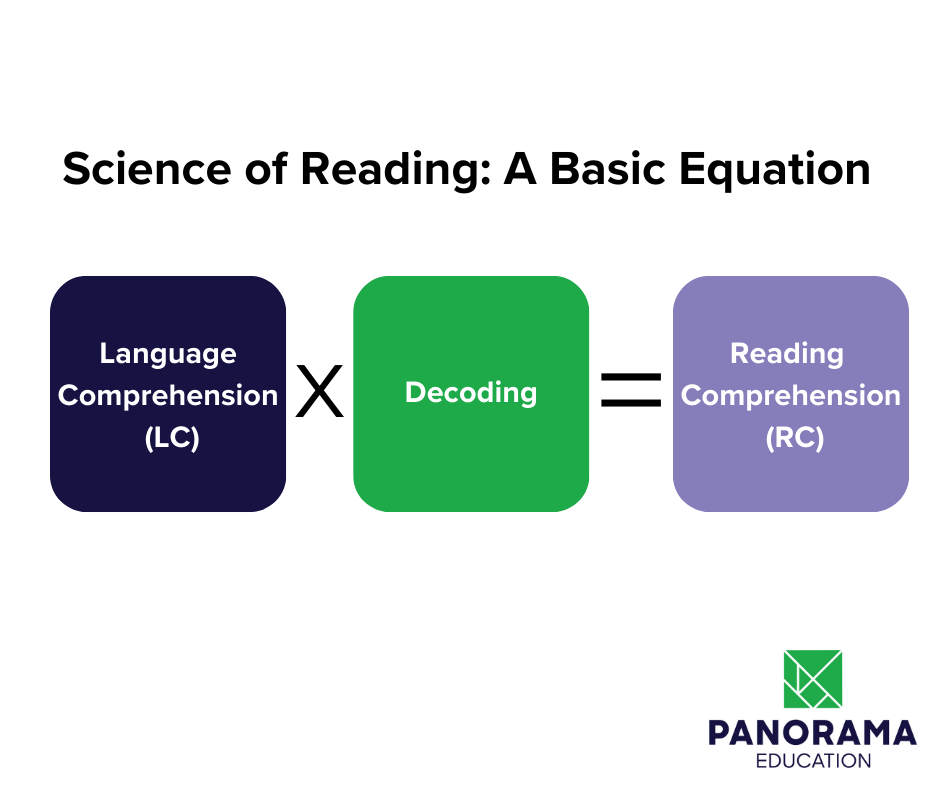
It's important to note that the Science of Reading is not a one-size-fits-all approach. Rather, it is a consensus from various disciplines. The goal of Science of Reading is to use evidence-based, systematic instruction to sequentially introduce the five components of reading:
- Phonemic Awareness
- Phonics
- Fluency
- Vocabulary
- Comprehension
Scarborough's Reading Rope
In 2001, Dr. Hollis Scarborough created the concept of the "reading rope." The reading rope demonstrates how different strands of literacy intertwine and strengthen one another. These strands are divided into two categories: language comprehension and word recognition. Essentially, the reading rope is a visual model of the Science of Reading—and what contributes to skilled reading.
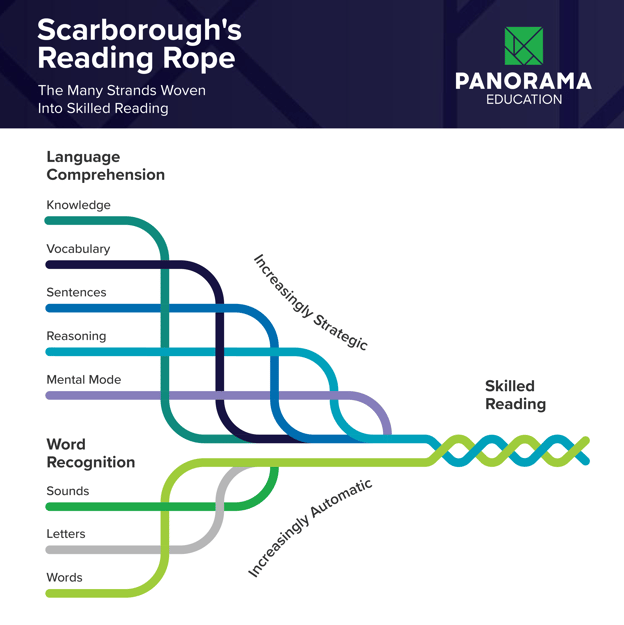
Scarborough's Reading Rope
Universal, Tier 1 instruction should include all strands of the reading rope. However, if students struggle with one or more skills, the entire rope may unravel. By identifying specific skills students struggle with—such as vocabulary or decoding—educators can provide appropriate tiered literacy interventions.
Science of Reading: Why Now?
In 2004, the National Panel on Reading published a report that solidified phonemic instruction as the gold standard of reading instruction. This report influenced “Reading First,” which was a Science of Reading-based federal education program. The “Reading First” initiative focused on a phonics-based literacy model, which would later inform Mississippi’s 2013 Literacy-Based Promotion Act, a bill that targeted literacy efforts and promoted a Science of Reading-based curriculum. As a result, Mississippi saw significant growth in literacy achievement, and rose to the middle of the nation in literacy.
The Science of Reading, deeply rooted in systematic phonics instruction, represented a pedagogical shift away from whole language and balanced literacy approaches. Several recent developments have led to heightened interested in Science of Reading, including:
- Significant learning loss in literacy stemming from the pandemic
- The substantial literacy growth that Mississippi saw in a short amount of time by implementing Science of Reading
- The modest gains—as opposed to setbacks—that Louisiana and Alabama saw in fourth-grade reading during the pandemic (both states have trained thousands of teachers in Science of Reading)
- An uptick in Science of Reading legislation across the nation
Challenges and Solutions
While research shows that Science of Reading is a very effective form of literacy instruction, change takes time. Putting a new form of literacy instruction in practice takes significant time and resources, and districts face many implementation hurdles.
Implementing a New Form of Literacy Instruction
Training educators in Science of Reading is a major challenge. Often, this training is intensive, costly, and difficult to access. Lack of available trainers makes scheduling difficult, and vendors struggle to secure enough trainers to meet district needs. And while districts can leverage the expertise of reading specialists, each building may only employ a few specialists.
Districts also face the hurdle of creating new literacy intervention plans rooted in SoR. Budget cuts reducing district-level staff have made this especially challenging. In many states, legislation and departments of education require that schools and districts comply with literacy plans—so it's not just writing the plan that presents a challenge. Districts must also adjust literacy schedules, intervention blocks, implement new curriculum, and restructure both school and classroom libraries.
These are daunting challenges—but district leaders aren't alone. High-quality strategic advising can help districts meet these training challenges and state literacy requirements. Access to evidence-based literacy interventions can support new curriculum requirements. MTSS platforms—like Panorama Student Success—can provide district leaders with valuable insights into reading and writing assessment data.
|
|
Finding Effective Interventions
Additionally, districts may struggle to find effective reading & writing interventions. High-quality ELA interventions, aligned to and informed by the Science of Reading, are a critical component for learning recovery and acceleration, but sourcing them takes time and resources. Additionally, finding evidence-based, age-appropriate interventions—that include adequate instructions and low-cost supplemental materials for each grade level—is a challenge.
If your educators are struggling to find reading & writing strategies, consider adding these to your district-wide intervention menu. Each strategy, aligned to Science of Reading and provided by Panorama's Playbook, includes detailed implementation instructions and step-by-step guides for classroom use.
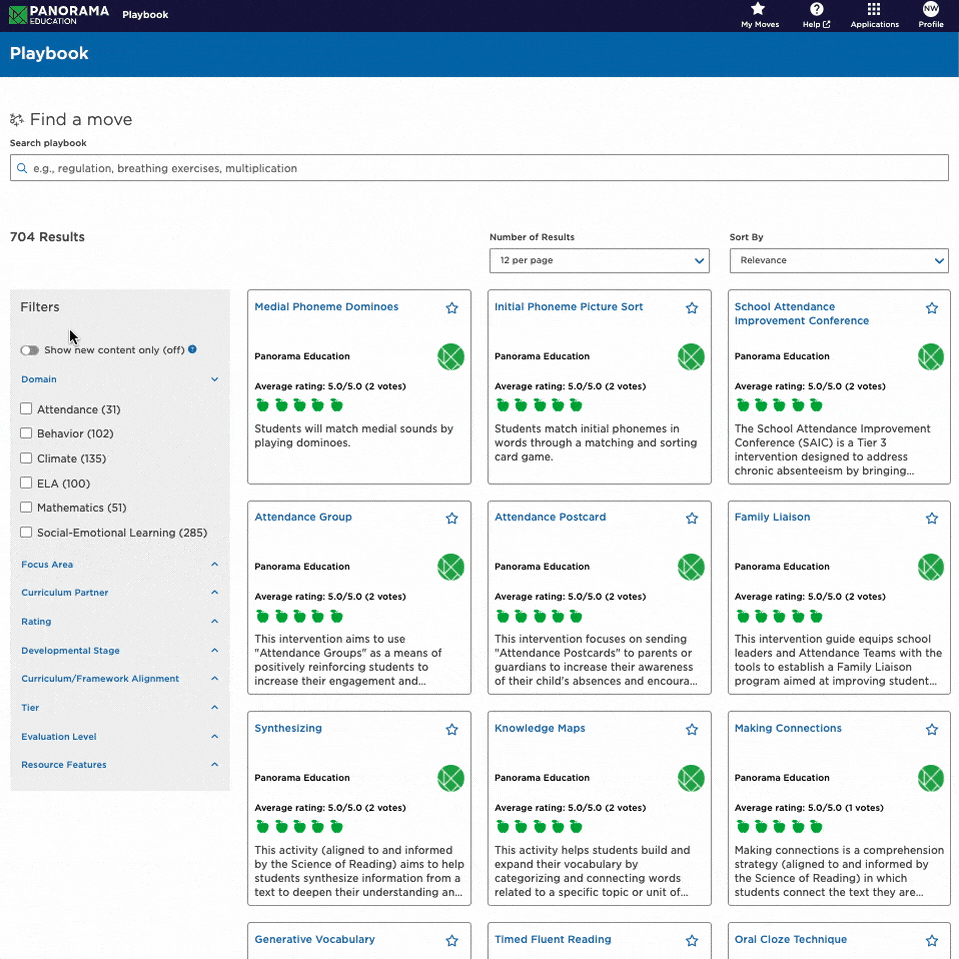
|
|
Viewing Comprehensive Student Data
Districts also face the challenge of monitoring student progress along these interventions and having access to comprehensive student data. Often, educators must toggle between different screens or programs, or they rely on multiple spreadsheets to track progress. This leaves potential for error in the decision-making process.
MTSS platforms, like Panorama Student Success, can solve that problem. The dashboard displays all student data on one screen, and allows every adult on that student's team to view that data. Educators and staff can view and edit intervention plans, monitor progress, and share intervention plans with families. Additionally, Student Success integrates with screeners and assessments, helping districts comply with state legislation.
|
|
Implementing Science of Reading curriculum presents many district-wide challenges. But it also offers educators the opportunity to move the needle on student success. In the next section, we'll break down implementing Science of Reading instruction within MTSS—and how this can support the whole child.
MTSS & the Science of Reading
A Multi Tiered System of Support (MTSS) allows educators to meet the needs of the whole child by providing a holistic view of behavior, well-being, and academic performance, which consists of both literacy and math. Assessment data can help determine if students are in need of interventions to recover lost learning or accelerate learning.
The Science of Reading is deeply rooted in evidence that informs how students become proficient in reading and writing. Through strong universal instruction and tiered interventions, educators can improve student outcomes in reading and writing.
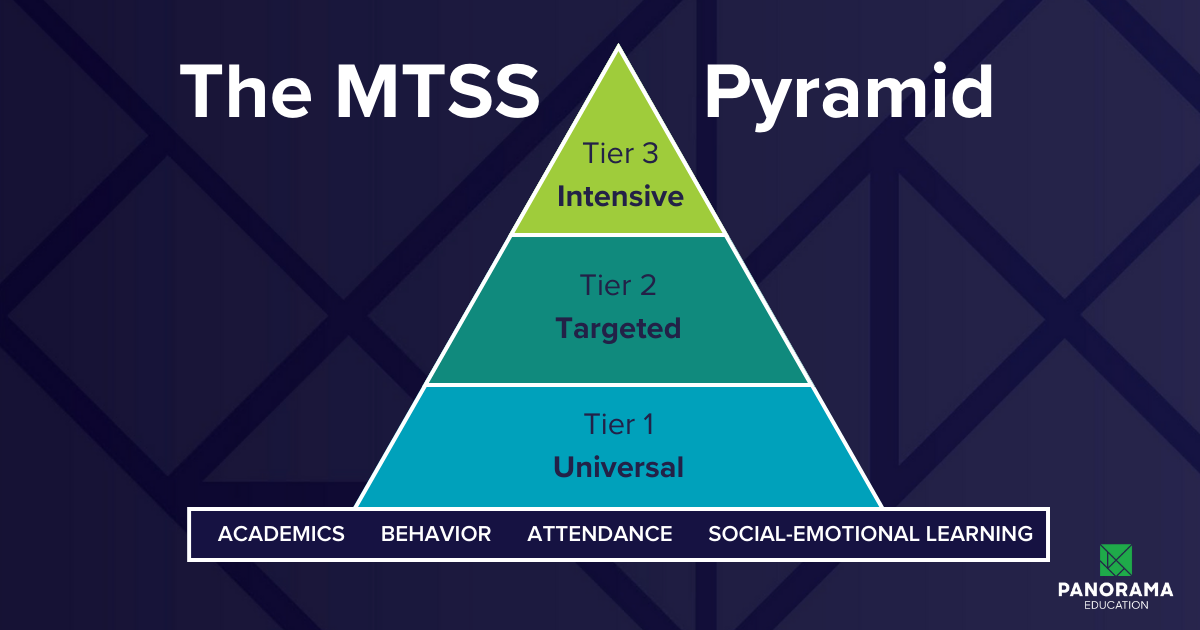
An example of the MTSS pyramid.
All aspects of MTSS—academics, behavior, attendance, and SEL—relate to the success of a student. For example, if a student is a struggling reader, this may impact their entire academic performance, behavior and attendance. So it's crucial that districts view literacy data alongside behavior, attendance, and other academic performance data to provide the most beneficial tiered interventions for each student.
Tier 1
Schools and districts following an MTSS structure use universal screening processes and assessment systems to identify which students need targeted supports. MTSS interventionists then use data across academic performance, behavior, attendance, and social-emotional learning to source the right intervention strategy from a whole-child perspective. The use of validated screeners, such as those integrated into Student Success, is required under many state reading laws.
Educators often refer to Tier 1 supports as “universal” because they are provided to every student. Strong Tier 1 practices are essential for strengthening school climate, relationships, and classroom instruction. Examples of Tier 1 supports include high-quality core instruction and cultivating a positive, inclusive school climate.
High-quality, evidence-based Tier 1 instruction is central to building students' skills across the five components of reading. Explicit, systematic instruction in phonemic awareness, phonics, fluency, vocabulary, and comprehension forms a strong foundation for student success in reading and writing. Additionally, differentiated instruction is part of building a strong base of instruction. Differentiated instruction could include:
- Providing instruction visually and verbally
- Adding multi-sensory instruction, such as sand tray writing or finger tapping of phonemes
- Including visuals, such as a table, chart, or captioned video
- Incorporating students' unique interests into reading or writing projects
- Using a combination of small group work, partner work, and alone time
- Creating a choice board
- Allowing for oral responses when gathering assessment data
Some students will need additional support beyond Tier 1 instruction. Educators can use assessment data and coursework to identify students who would benefit from Tier 2 & Tier 3 reading interventions.
Tier 2
Tier 2 supports are targeted, additional interventions for students who do not adequately respond to Tier 1 supports. Typically, around 15 to 20% of students will receive Tier 2 support. Educators often give these interventions in small group settings, layered alongside Tier 1 instruction. Examples of these strategies include:
- Sentence Starters: Sentence starters are a tool designed to support students in creating complete, assignment-appropriate (spoken and written) sentences. The strategy can be used to scaffold student learning and offer specific support to English language learners and emerging writers.
- Paraphrasing: Successful paraphrasing involves identifying key ideas and supporting details in a text and rephrasing them using simpler language. A paraphrase is often the same length as or longer than the original text. The ability to paraphrase a text demonstrates that a student has read critically and proficiently.
Schools often convene Student Support Teams, Student Intervention Teams, or Child Study Teams (CST) to identify at-risk students. These teams use data from multiple domains to determine appropriate interventions. Many schools establish data "cut points” across academics, behavior, attendance, and social-emotional learning to determine when a student needs to receive Tier 2 interventions.
These teams, alongside educators or student champions, also monitor student progress along Tier 2 interventions. Depending on the intervention, educators may choose to progress monitor on a weekly, bi-monthly, or monthly basis, using many types of data:
- Quantitative data: Some goals are best tracked numerically, such as using an assessment score to monitor reading level growth or computational fluency.
- Qualitative data: Some goals are best tracked using observational data, such as recording how a student is interacting with classmates for a behavioral goal.
- A combination of both: Sometimes, both quantitative and qualitative data are useful to track. For example, you can track class participation by how often the student participates and the content of their comments in class.
Determining whether an intervention is working for a student isn’t always straightforward, especially for reading and writing interventions. By collecting and acting on data, teams and educators can make informed decisions on what's best for their students.
|
|
Tier 3
Tier 3 supports refer to intensive services that 1% to 5% of students receive if they continue to struggle and require even more support. It is also for students who are undergoing more of an acute crisis.
Just because a student may need Tier 3 support in one area does not mean they have moved into “Tier 3.” In MTSS, a student may receive interventions in multiple tiers at once; they could have plans for a Tier 2 support in math, a Tier 3 in literacy, and Tier 1 for social-emotional learning.
See the Whole Child, Support the Whole Child
Delivering high-quality interventions is critical for students who need additional reading and writing support. But when we view literacy assessment data in isolation from attendance, behavior, and other academic data, we miss the whole story. Comprehensive, actionable data empowers educators to make decisions on the best supports for each student.
For example, we know that chronically absent students are twice as likely to fail one or more courses than regularly attending students. So if a student is struggling in their English course, it's important to examine all aspects of their performance—including attendance. The student may benefit from tiered writing support alongside an attendance intervention.
Additionally, we know that students who struggle with skills like reading comprehension may experience challenges in other subjects, including mathematics. Having access to comprehensive student data highlights meaningful connections between students' ELA skills and other key indicators. When educators see the whole picture of a child, they can allocate resources and support where they're most needed.
|
Watch a 3-minute demo of Panorama Student Success. Get a sneak peek of the district and school MTSS dashboards, learn how Panorama can streamline intervention planning, and see what it looks like to have whole-child student information in one place. |
Aligning to State-Specific Framework and Legislation
As research continues to support Science of Reading-based instruction, many states now require districts to ground their curriculum in SoR. As of 2023, 43 states have passed bills requiring Science of Reading-aligned policies in their state. This legislation primarily focuses on:
- Teacher training, professional development and accreditation
- Evidence-based reading curriculum
- Creating student-level literacy plans and sharing them with parents
- Employing evidence-based interventions & monitoring student progress
Many bills require evidence-based support or curriculum, with some explicitly requiring interventions based in the Science of Reading. Additionally, some districts must now show assessment and intervention data, demonstrating improved reading and writing skills.
For example, a previous Arizona reading law requires districts to provide ongoing training in evidence-based reading and schools to adopt evidence-based reading curricula that include the essential components of reading. This 2022 update changes the frequency with which literacy plans are submitted to the state and broadens the exemption to retention for English-language learners.
Another example of this legislation is The Georgia Early Literacy Act, which passed in April 2023. It requires the state board of education to approve a list of curricula for teaching K-3 reading and a list of screening tools to identify struggling students. The department of education must also provide a free screener.
Georgia districts are also required to develop individual reading plans for struggling students. They must also adopt materials designated by the state as high-quality, or certify that the materials they use meet these standards. The state department of education is required to develop or purchase literacy training for inservice K-3 teachers, and assessments for teacher certification must be aligned with evidence-based literacy instruction.
Examples of how districts are meeting their state-specific requirements include:
-
Kentucky Department of Education’s Reading Improvement Plan Template
-
Tennessee Department of Education’s Reading 360 Initiative
-
Alabama Department of Education’s AL-MTSS
If your district finds it challenging to align to new legislation, Panorama can help. Our team consists of former district leaders from across the nation, as well as education policy experts. This team partners with districts to develop Literacy Intervention Plans to gain state department of education approval and comply with Science of Reading Legislation.
Additionally, Panorama’s MTSS platform makes it easy for districts to track literacy data and progress monitor evidence-based interventions. Student’s literacy progress can easily be shared with parents, and the platform integrates with screeners and benchmark assessments, helping districts ensure compliance with state legislation. And Panorama’s Playbook supports school leaders with dozens of evidence-based and SoR aligned interventions that can be filtered down by literacy skill for particular students or groups.
|
|
|
Frequently Asked Questions: What are the first steps we should take to implement the Science of Reading in our district? What are some common challenges districts face when implementing the Science of Reading, and how can we overcome them?
|
Next Steps for School & District Leaders
Connecting literacy to behavior, attendance, student mindset, and academic performance is crucial to supporting whole student success. But to see the entire picture, school and district leaders need access to comprehensive, actionable data.
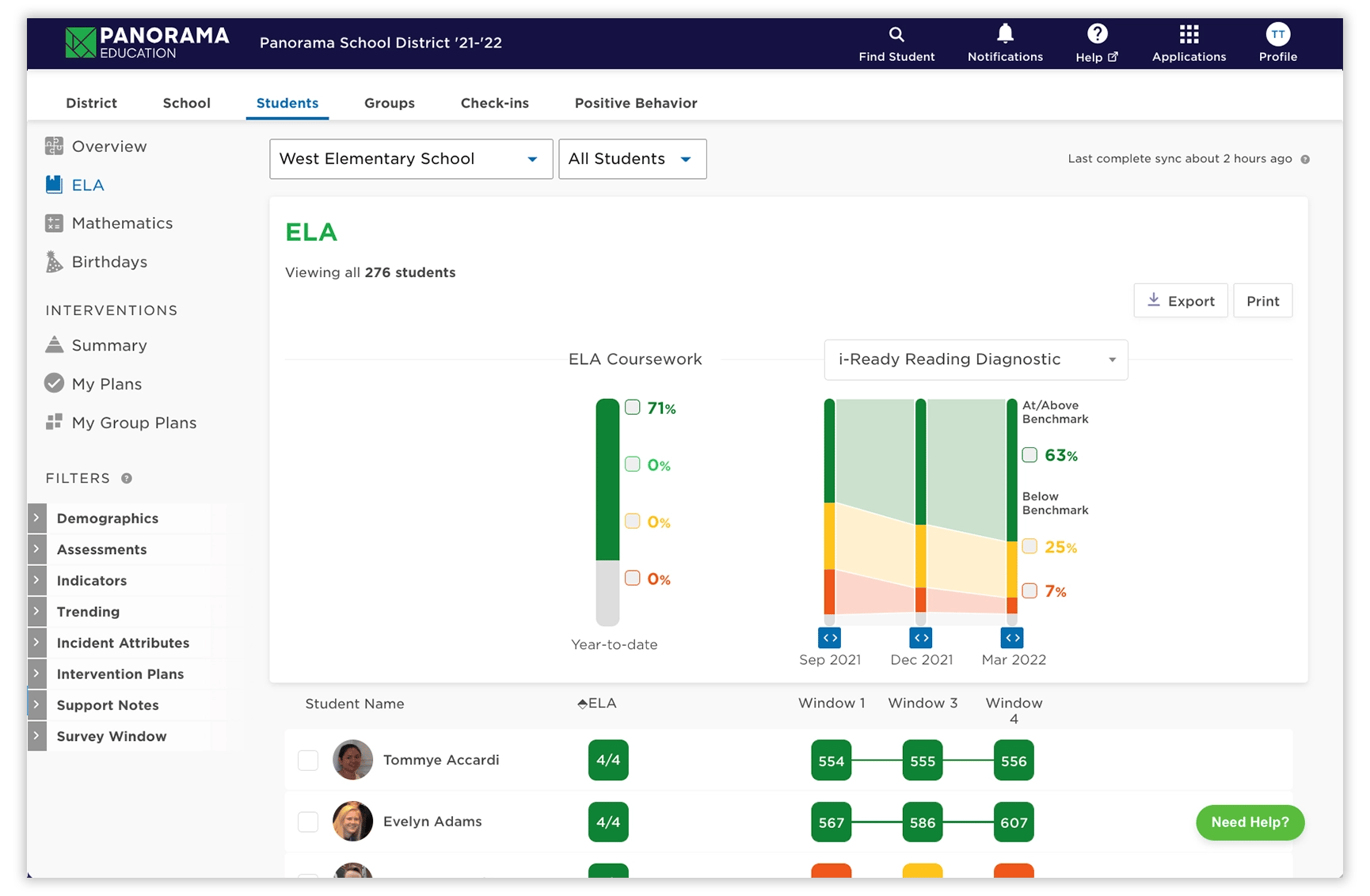
Panorama Student Success (demo data pictured).
Panorama Student Success provides this data. Through a comprehensive dashboard, Panorama provides educators with a means to create and monitor literacy growth and intervention progress. Student Success displays your district, school, and student on one screen, which means educators can make data-informed decisions with ease. In addition, Panorama integrates with several state-adopted literacy assessments from across the nation.
Contact us to learn more about how Panorama can support your district's implementation of Science of Reading. Additionally, explore these resources to support Science of Reading and literacy education in your district:
|
Resource List
|



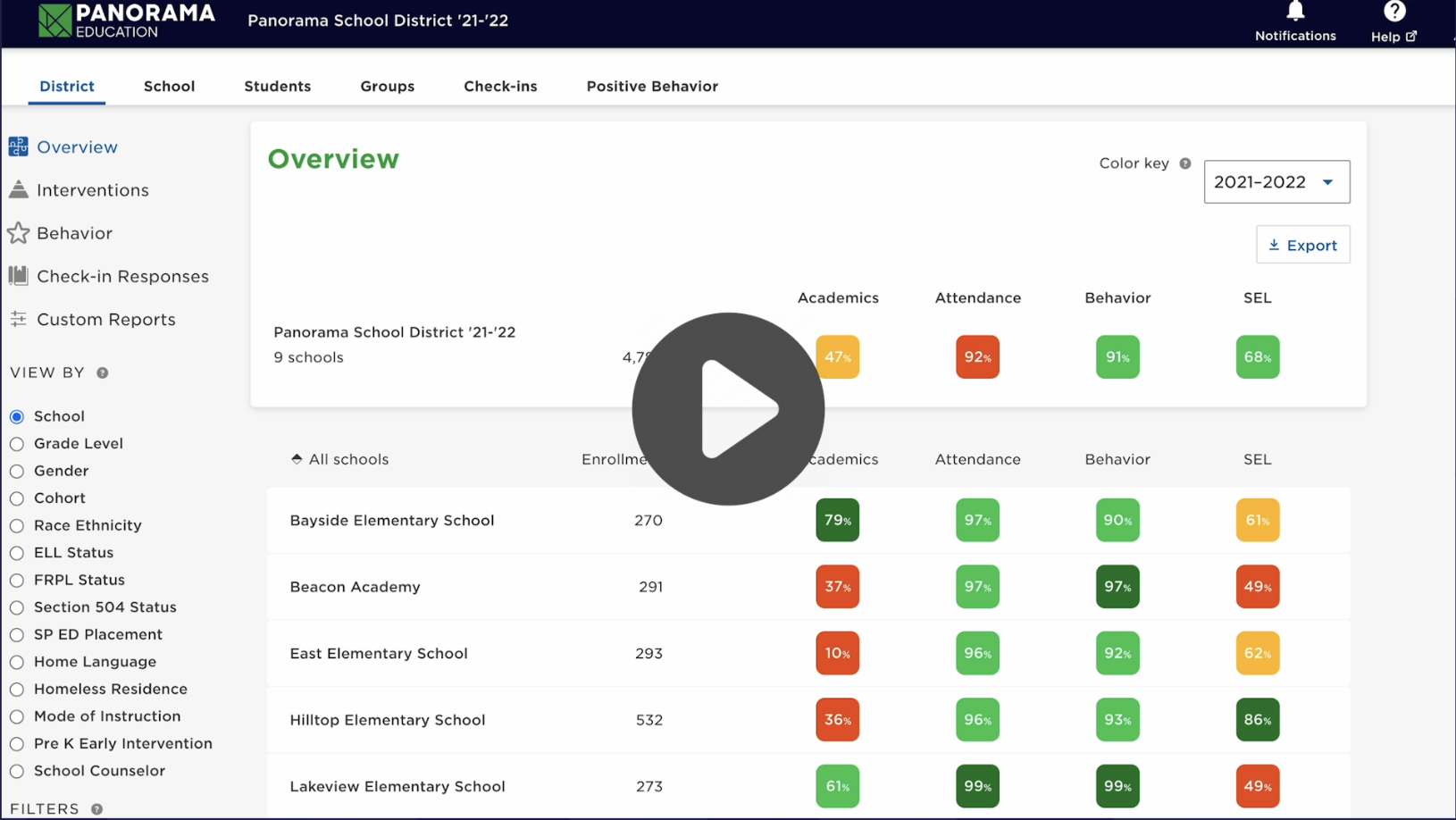

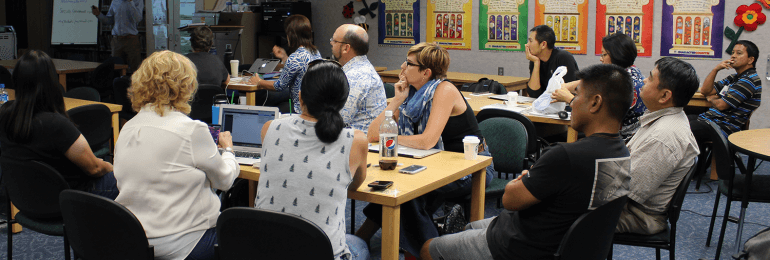

.webp?width=666&height=640&name=Book%20thumb_21%20interventions%20mtss%20(1).webp)